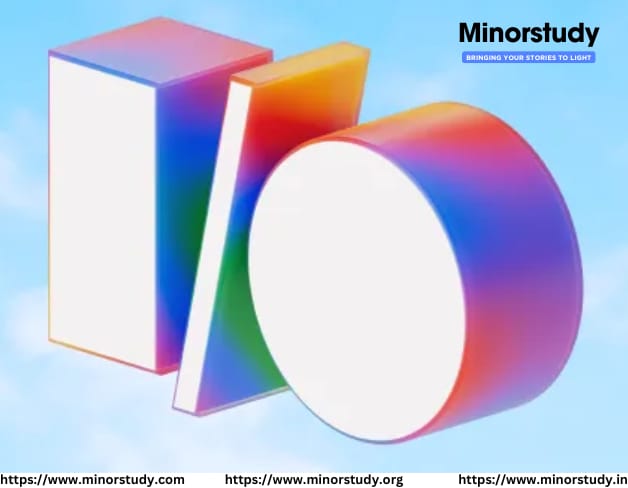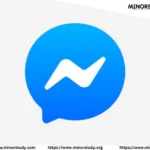🟨 1. What is Google I/O?
Google I/O is Google’s annual developer conference, where the tech giant unveils its latest innovations in:
- 🟨 1. What is Google I/O?
- 🟨 2. Google I/O: The Birth and Evolution
- 🟨 3. Timeline: Major Google I/O Milestones (2008–2025)
- 🟨 4. 9 Shocking and Game-Changing Google I/O Facts
- 🟨 5. Why Google I/O Matters in Our Daily Lives
- 🟨 6. Significance to Developers, Creators & Society
- 🟨 7. Observance and Global Reach
- 🟨 8. Wishing Culture Around Google I/O
- 🟨 9. Frequently Asked Questions (FAQs)
- 🟨 10. Important Takeaways
- 🟨 11. Conclusion: A Window Into the Future
Artificial Intelligence (AI)
Android and WearOS
Google Search
Google Maps
Google Cloud
Pixel devices and hardware
Software development tools
“I/O” stands for Input/Output, but also “Innovation in the Open” — a nod to Google’s open ecosystem philosophy.
It’s not just for tech geeks — it’s a stage where the future of the digital world is unveiled, impacting billions of lives.
🟨 2. Google I/O: The Birth and Evolution
Launched: May 2008
Founder: Google Inc.
Location: Shoreline Amphitheatre, Mountain View, California (mostly)
Audience: Developers, tech enthusiasts, media, and general consumers
Format: Keynotes, sessions, code labs, and hands-on experiences
Initially, Google I/O started as a developer-only event, but over time, it evolved into a mainstream tech showcase for the world.
🟨 3. Timeline: Major Google I/O Milestones (2008–2025)
| Year | Milestone |
|---|---|
| 2008 | First Google I/O held. Android 1.0 and Google Maps API launched. |
| 2011 | Chrome OS and Chromebook revealed. |
| 2012 | Google Glass prototype unveiled. |
| 2014 | Material Design introduced. Android Wear announced. |
| 2016 | Google Assistant and Google Home debuted. |
| 2018 | Duplex AI shocked the world with human-like calls. |
| 2020 | Canceled due to COVID-19 (held online only). |
| 2021 | AI-powered dermatology and LaMDA conversation model. |
| 2023 | Bard AI launched; Android 14 announced. |
| 2024 | Gemini AI platform introduced; Android 15 previewed. |
| 2025 | Focus on Google Search with AI Overviews, Project Astra, and Multimodal Gemini updates. |
🟨 4. 9 Shocking and Game-Changing Google I/O Facts
Over 2 million developers have attended Google I/O (virtually or in-person) since 2008.
Google Assistant, now in billions of devices, debuted at I/O 2016.
Android updates are almost always first revealed at I/O — impacting 3+ billion users.
The AI model LaMDA was introduced at I/O 2021 to push conversational intelligence.
Google Bard, the ChatGPT competitor, was officially launched at I/O 2023.
Google I/O 2018 shocked viewers with Duplex AI, mimicking human voice to make calls.
Material You, Android’s design language update, debuted at I/O 2021.
Google I/O 2024 focused on Gemini AI + Android ecosystem fusion.
In 2025, Project Astra by DeepMind gave us a sneak peek at AI with video memory and live assistance — the future of “AI agents.”
🟨 5. Why Google I/O Matters in Our Daily Lives
You may not watch Google I/O live, but its announcements shape your digital life every single day.
📱 Mobile Life:
Your Android phone’s design, speed, battery management — all refined via I/O updates.
🧠 AI Integration:
Whether it’s voice typing, smart replies, or AI photo edits, the magic starts here.
📍 Navigation & Maps:
Google Maps’ eco-friendly routes and AR-powered Live View navigation started at I/O.
🧑🏫 Learning and Productivity:
Docs, Gmail, Calendar — smarter through I/O-backed AI updates.
🟨 6. Significance to Developers, Creators & Society
👨💻 Developers:
I/O is the Olympics of developers. Code labs, API launches, and SDK kits give early access to build futuristic apps.
🎨 Designers:
Material Design, animation engines, UI/UX principles — all updated here.
🌍 Society:
From accessibility tools for the blind to climate-focused routing, Google I/O emphasizes inclusive innovation.
🟨 7. Observance and Global Reach
While not a “holiday,” Google I/O is an annual observance in the tech community, with:
Live watch parties in tech hubs across the world
Live tweets, memes, and discussions on Reddit and X (Twitter)
Developer challenges and hackathons globally tied to I/O
Countries like India, Brazil, Nigeria, Indonesia, and Germany have massive I/O fanbases.
🟨 8. Wishing Culture Around Google I/O
On the opening day of Google I/O, you’ll often see tech enthusiasts saying:
“Happy Google I/O Week!”
“May your bugs be few and APIs be stable!”
“Wishing all devs a productive I/O!”
Just like Apple WWDC fans, the I/O community expresses excitement, creativity, and nerdy optimism in fun ways.
🟨 9. Frequently Asked Questions (FAQs)
Q1. Is Google I/O free to attend?
Yes — Google I/O has been free and virtual since 2021, though physical attendance requires an invitation or ticket.
Q2. Can non-developers benefit from Google I/O?
Absolutely! It’s packed with updates about Google products that millions use daily — from Search to Photos to YouTube.
Q3. Is I/O only about Android?
No — I/O covers Chrome, Pixel hardware, AI, Google Cloud, and even quantum computing.
Q4. When is Google I/O usually held?
Between May and June each year.
Q5. How can I watch it?
On Google’s official I/O website or on YouTube.
🟨 10. Important Takeaways
| Feature | Impact |
|---|---|
| Android Announcements | Shape your mobile experience |
| AI Unveilings | Affect Google Search, Gmail, Docs, and more |
| Developer Tools | Allow better, faster, and smarter apps |
| Accessibility Tools | Help disabled users navigate better |
| Hardware Innovation | Pixel phones, watches, and AR demos |
| Global Developer Support | Encourages learning, building, and open source culture |
🟨 11. Conclusion: A Window Into the Future
It is not just a tech event — it’s a preview of our future.
It shows us how we’ll work, learn, travel, communicate, and even dream. The ideas presented at I/O shape the next generation of tools that become so normal we forget they ever needed “announcing.”
From AI that books your haircuts to glasses that translate real-time language, Google I/O has been responsible for some of the most transformative tech moments in recent memory.
If you’ve ever said, “Okay Google,” tapped an Android feature, or used Smart Compose in Gmail — Google I/O is already in your life.









Some really superb articles on this internet site, regards for contribution. “The spirit is the true self.” by Marcus Tullius Cicero.